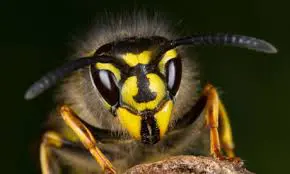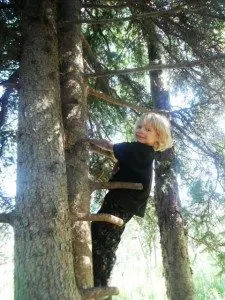“Fly bug, mom! Fly bug!” My toddler, like many others of his age group, has always had a deep fascination for creepy crawlies. They are all bugs to him. Spider bugs, worm bugs, beetle bugs, and of course, fly bugs. The obvious problem is not all fly bugs are harmless. Before he was a year old, my son had already been stung three times, and things didn’t look good for a decrease in his toddler years. Bee sting allergies run in my family, so I worried he might get stung in the face or throat someday and end up with more than a boo-boo.
How can you can prevent kid wasp stings, hornet stings and bee stings?
Teach. The nice thing about bees, wasps, and hornets is they have a very distinctive appearance. Reading books about stinging bugs and doing art projects can help younger kids separate them from other bugs while learning to respect our environment. Then you can teach them that the stripped “fly bugs” are dangerous and should be left alone.
Bee proof. Next, your child’s primary play spaces should be bee-proofed, so to speak. Be sure to check your yard and house eaves regularly for the beginnings of hives. Keep trash receptacles tightly sealed, plant flowers away from your toddler’s play areas, and keep compost piles in other areas of the yard as well.
For indoor play, window and door screens can help tremendously. You may also consider setting traps. Simply take a plastic bottle, fill it about half way with a sweet liquid such as soda or beer, and set it on your windowsill or front porch. If you prefer you can also buy pre-made traps. Hornets and yellow jackets are attracted to the trap rather than the enticing smells in your home. This can also cut down on houseflies.
Dress safely. When your kiddo is going to be outside, avoid dressing them like a flower. No seriously, skip fragranced lotions, sun blocks, or shampoos and avoid bright colors such as yellow and red. Bees, wasps, and hornets are generally just out looking for food, if your child looks and smells like food, they’re more prone to be attractive to stinging bugs.
Snack safely. When outside, keep your child free of sweet stuffs. Pocket wet wipes are awesome in this department. Make sure that any drinks are capped. Fruit juice is particularly attractive to many types of stinging bugs.
What does wasp sting, hornet sting, or bee sting treatment entail?
No matter how many preventive measures you take, eventually your child will likely get stung anyway. Home sting remedies are bountiful and mostly wives tales. However, sadly, little actual scientific research has been done on the subject. What is known is you want to immediately remove the stinger if still present in the skin. How isn’t important, though many parents swear by flicking it out with a credit card.
Suggestions to ease pain after the stinger is removed include tobacco, baking soda, pennies, aspirin, meat tenderizer, onions, vinegar, Benadryl , honey, toothpaste, calamine lotion, papaya, hydrocortisone cream and ice. One study did find an aspirin paste to be ineffective and even extended the redness period. This same study found ice to be effective. Pennies for wasp and bee stings appears to be an illogical wives tale. One helpful man tried all of the suggested methods. He found toothpaste or calamine lotion applied to the sting after icing it worked best. Baking soda, meat tenderizer, papaya, hydrocortisone cream and vinegar were also effective. Honey was so-so. Benadryl , tobacco, and onion were the least effective.
No matter how your treat it keep an eye out for allergic reactions such as excessive swelling in areas not near the sting, hives, shortness of breath, trouble breathing, rapid pulse and dizziness. If you suspect an allergic reaction, seek medical attention immediately.


